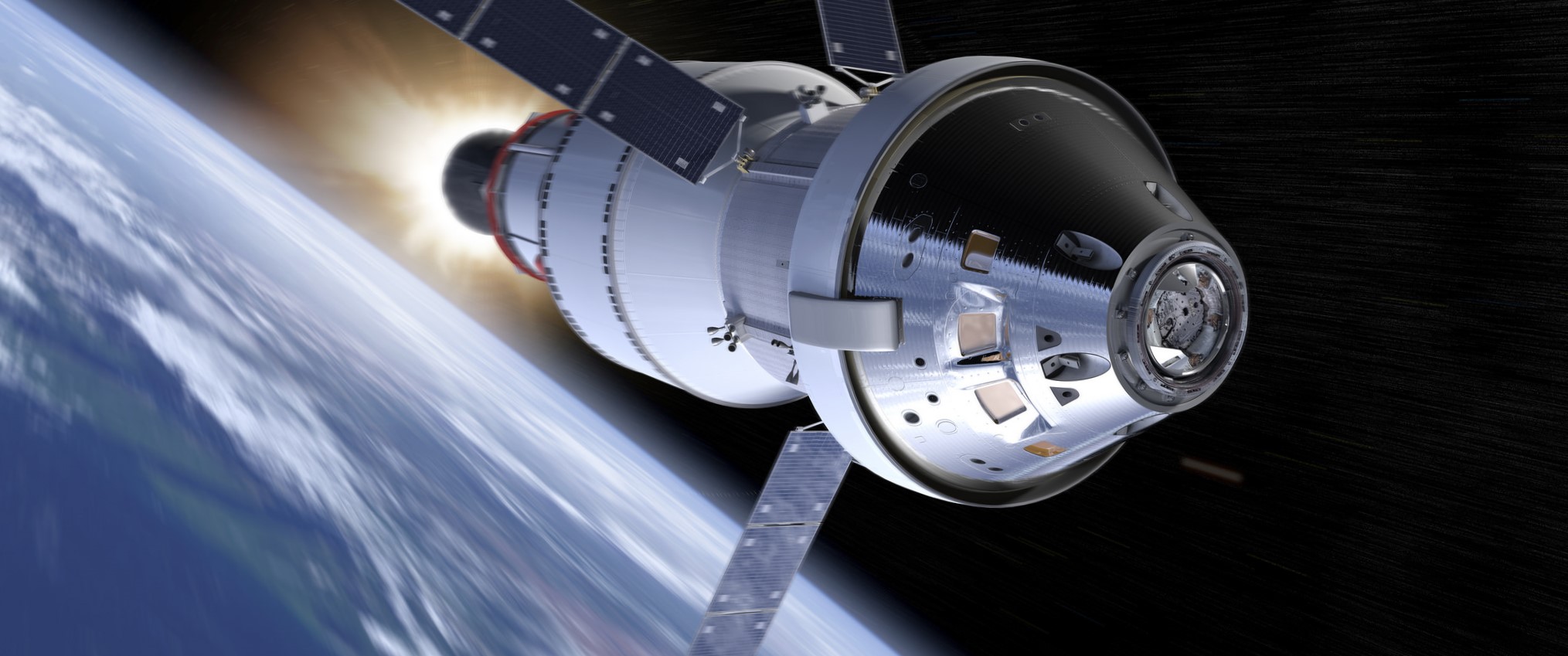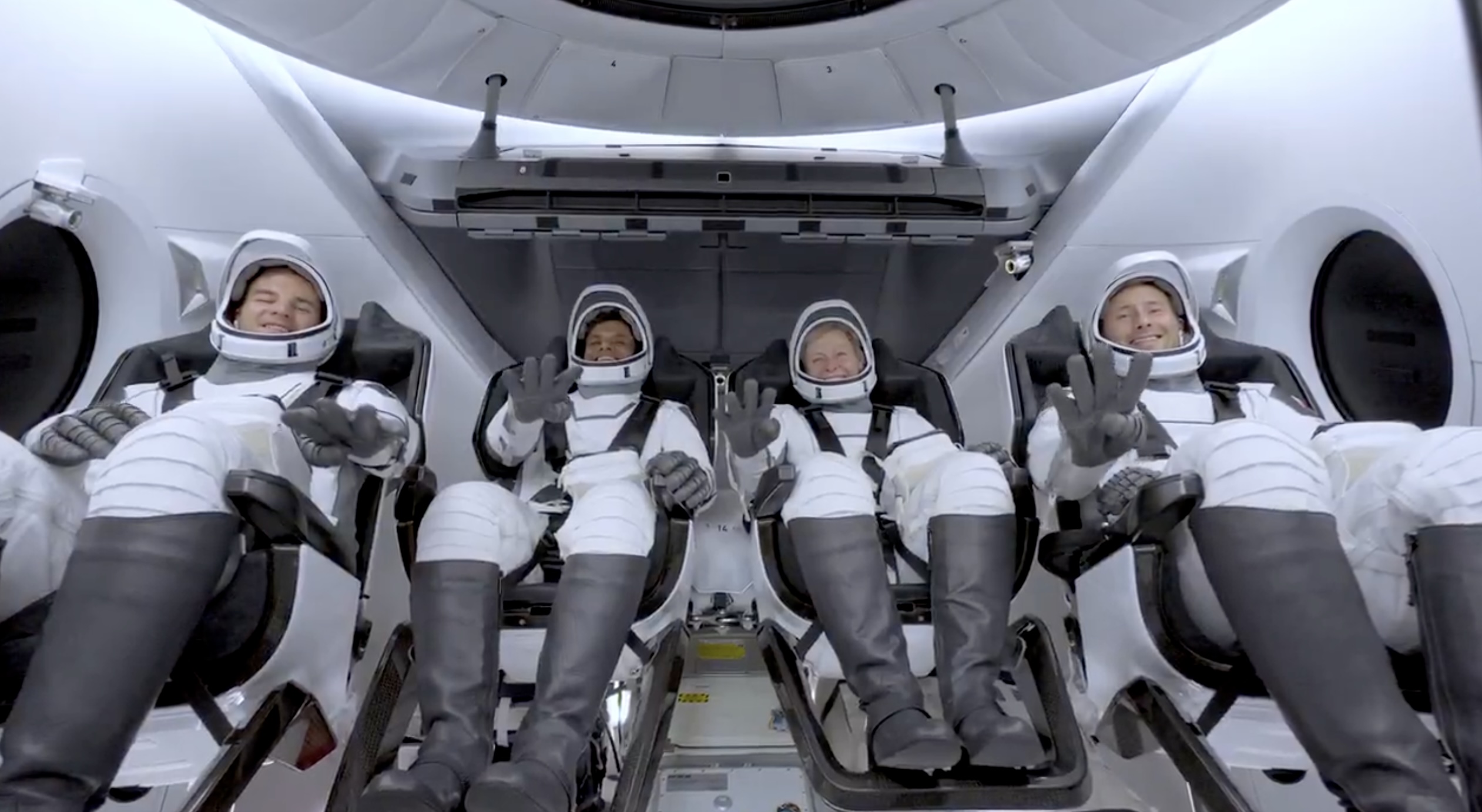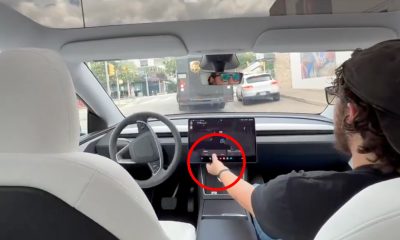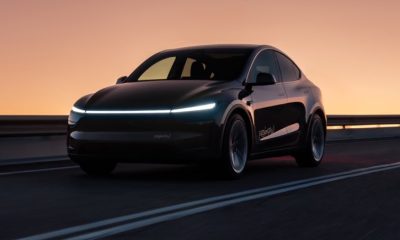

SpaceX
SpaceX & ULA could compete to launch NASA’s Orion spacecraft around the Moon
In barely 48 hours, the future of NASA’s SLS rocket was buffeted relentlessly by a combination of new priorities in the White House’s FY2020 budget request and statements made before Congress by NASA administrator Jim Bridenstine. Contracted by NASA to companies like Boeing, the outright failure of SLS contractors to stem years of launch delays and billions in cost overruns has lead to what can only be described as a possible tipping point, one that could benefit companies like ULA, SpaceX, and Blue Origin.
On March 11th, the White House’s 2020 NASA budget request proposed an aggressive curtail of mission options available for the SLS rocket, preferring instead to save hundreds of millions (and eventually billions) of dollars by prioritizing commercial launch vehicles and indefinitely pausing all upgrade work on SLS. On March 13th, Administrator Bridenstine stated before Congress that he was dead-set on ensuring that NASA sticks to a current 2020 deadline for Orion’s first uncrewed circumlunar voyage (EM-1), even if it required using two commercial rockets (either Falcon Heavy or Delta IV Heavy) to send the spacecraft around the Moon next year. In both cases, it’s safe to say that the political tides have somehow undergone a spectacular 180-degree shift in attitude toward SLS, the first salvo in what is guaranteed to be a major political battle.
“Deferred” upgrades
Of the many potential challenges the ides of March have placed before SLS, the first and potentially most significant involves the rocket’s tentative path to future upgrades over the course of its operation. Those upgrades primarily center around the Exploration Upper Stage (EUS) and a new mobile launcher (ML) platform, as well as a longer-term vision known as SLS Block 2. At least with respect to the EUS, NASA (and politicians) were apparently less and less okay with the extraordinary amount of money and time Boeing suggested it would need to develop the new upper stage, to the extent that cutting (or “deferring”) its development could likely save NASA billions of dollars between now and the distant and unstable completion date. Without the EUS, SLS would be dramatically less useful for extreme deep space exploration, effectively the entire purpose of its existence. Instead, the White House included language that would limit SLS launches to crew transfer missions with the Orion spacecraft and nothing more, cutting out heavy cargo missions for science or station-building. Ultimately, those crew transport launches would probably be more than enough to keep SLS Block 1 and Orion busy.
However, two days later, Administrator Bridenstine stated before Congress that he was dead-set on ensuring that NASA sticks to a current 2020 deadline for Orion’s first uncrewed circumlunar voyage (EM-1), going so far as to suggest that NASA was examining the possibility of launching the ~26 ton (57,000 lb) spacecraft on a commercial rocket, followed by a separate launch of a boost stage to send Orion to the Moon. If this were to occur, the consequences could be far-reaching for SLS, potentially delaying the first crewed launch of Orion on SLS until EM-3 and creating a ready-made, one-to-one replacement for SLS at drastically lower costs. At that point, nothing short of political heroics and aggressive bribery could save the SLS program from outright cancellation.
As it stands, the only rockets capable of conceivably supporting a 2020 launch of the 26-ton Orion are ULA’s Delta IV Heavy and SpaceX’s Falcon Heavy, both of which are certified by NASA for (uncrewed) launches. In fact, Falcon 9 was very recently certified by NASA’s Launch Services Program (LSP) to launch the highest priority NASA payloads, signifying the space agency’s growing confidence in SpaceX’s reliability and mission assurance. While the process of certifying Falcon Heavy for an uncrewed Orion launch would be far more complicated than simply grouping Falcon 9’s readiness with Heavy, it would no doubt help that Falcon Heavy is based on hardware (aside from the center core) almost identical to that found on Falcon 9.


The fact that Bridenstine indicated that the primary goal of these potential changes was to speed up EM-1 – an uncrewed demonstrated of Orion functionally similar to Crew Dragon’s recent DM-1 mission – is also significant, as is the fact that such a commercial SLS stand-in would require two separate launches to complete the mission. One launch would place Orion and its service module (ESM) into Low Earth Orbit (LEO), while a second launch would place a partially or fully-fueled upper stage into orbit to propel Orion on a trajectory that would take it around the Moon and back to Earth, similar to the milestone Apollo 8 mission. The need for two launches and the fact that Orion would be uncrewed means that both SpaceX and ULA would be possible candidates for either or both launches, potentially allowing NASA to exploit a competitive procurement process that could lower costs further still.
If Europa Clipper is anything to go off of, launching Orion EM-1 on a commercial rocket could save NASA and the US taxpayer at least $700M (before any potential development costs), aided further by potential competition between ULA and SpaceX. On the other hand, a system that can launch Orion and support EM-1 could fundamentally support all Orion EM missions, of which many are planned. Whether or not Bridenstine and the White House have considered the ramifications, what that translates into is a direct and pressing threat to the continued existence of SLS, with the White House recommending that the rocket be barred from launching large science missions or space station segments as the NASA administrator proposes making it redundant for Orion launches. As Ars Technica’s Eric Berger rightly notes in the tweet at the top of this article, those are the only three conceivable projects where SLS would have any value at all.
If NASA actually went through with this preliminary plan to launch Orion around the Moon on a commercial rocket, they agency would have also fundamentally created a packaged replacement for SLS with a price tag likely 2-5 times cheaper. If Congress had the option to choose between two offerings with similar end-results where one of the two could save the US hundreds of millions of dollars at minimum, it would be almost impossible to argue for the more expensive solution.
Battle of the Heavies
Despite the potential competitive procurement opportunity for a commercial Orion launch, things could get significantly more complicated depending on the political motivations behind the White House and NASA administrator. While Bridenstine explicitly avoided saying as much, the options available to NASA would be ULA’s Boeing-built Delta IV Heavy (DIVH) rocket and SpaceX’s brand new Falcon Heavy. DIVH holds a present-day advantage with active NASA LSP certification for uncrewed spacecraft launches, something Falcon Heavy has yet to achieve.
Nevertheless, it could be the case that NASA, Bridenstine, and/or the White House have a vested interested in potentially replacing SLS for crewed Orion launches entirely. Either way, it’s incredibly unlikely that NASA would launch SLS for the first time ever with astronauts aboard, a massive risk that would also patently contradict the agency’s posture on Commercial Crew launch safety, which has resulted in one uncrewed demo for both Boeing and SpaceX before either be allowed to launch astronauts. NASA also demanded that SpaceX launch Falcon 9 Block 5 seven times in the same configuration meant to launch crew. If NASA is actually interested in at least preserving the option for future crewed launches using the same commercial arrangement, Falcon Heavy is by far the most plausible option Orion’s first uncrewed launch. NASA and SpaceX are deep into the process of human-rating Falcon 9 for imminent Crew Dragon launches with NASA astronauts aboard, meaning that NASA’s human spaceflight certification engineers are about as intimately familiar with Falcon 9 as they possibly can be.


Given that much of Falcon Heavy has direct heritage to Falcon 9, particularly so for the family’s newest Block 5 variant, SpaceX has a huge leg up over ULA’s Delta IV Heavy if it ever came time to certify either heavy-lift rocket for crewed launches. In a third-party study commissioned by NASA and completed in 2009, The Aerospace Corporation concluded that Delta IV Heavy could be human-rated but would require far-reaching modifications to almost every aspect of the rocket’s hardware and software. Most notably, Aerospace found – in a truly ironic twist of fate – that Boeing would likely need to develop a wholly new upper stage for a human-rated Delta IV Heavy, increasing redundancy by increasing the number of RL-10 engines from two to four. As proposed by Boeing, the Exploration Upper Stage – under threat of deferment due to high cost and slow progress – would also feature four RL-10 engines and much of the same upgrades Boeing would need to develop for EUS. Aside from an entirely new upper stage, ULA would also need to develop and qualify an entirely new variant of the RS-68A engine that powers each DIVH booster. Ultimately, TAC believed it would take “5.5 to 7 years” and major funding to human-rate Delta IV Heavy.
Meanwhile, Falcon Heavy already offers multiple-engine-out capabilities, uses the same M1D and MVac engines – as well as an entire upper stage – that are on a direct path to be human-rated later this year, and two side boosters with minimal changes from Falcon 9’s nearly human-rated booster. NASA would still need to analyze the center core variant and stage separation mechanisms, as well as Falcon Heavy as an integrated and distinct system, but the odds of needing major hardware changes would be far smaller than Delta IV Heavy.

Regardless, it will be truly fascinating to see how this wholly unexpected series of events ultimately plays out as Congress and its several SLS stakeholders begin to analyze the options at hand and (most likely) formulate a battle plan to combat the threats now facing the NASA rocket. According to Administrator Bridenstine, NASA will have come to a final decision on how to proceed with Orion EM-1 as soon as a few weeks from now.
Check out Teslarati’s Marketplace! We offer Tesla accessories, including for the Tesla Cybertruck and Tesla Model 3.
News
SpaceX launches Ax-4 mission to the ISS with international crew
The SpaceX Falcon 9 launched Axiom’s Ax-4 mission to ISS. Ax-4 crew will conduct 60+ science experiments during a 14-day stay on the ISS.

SpaceX launched the Falcon 9 rocket kickstarting Axiom Space’s Ax-4 mission to the International Space Station (ISS). Axiom’s Ax-4 mission is led by a historic international crew and lifted off from Kennedy Space Center’s Launch Complex 39A at 2:31 a.m. ET on June 25, 2025.
The Ax-4 crew is set to dock with the ISS around 7 a.m. ET on Thursday, June 26, 2025. Axiom Space, a Houston-based commercial space company, coordinated the mission with SpaceX for transportation and NASA for ISS access, with support from the European Space Agency and the astronauts’ governments.
The Ax-4 mission marks a milestone in global space collaboration. The Ax-4 crew, commanded by U.S. astronaut Peggy Whitson, includes Shubhanshu Shukla from India as the pilot, alongside mission specialists Sławosz Uznański-Wiśniewski from Poland and Tibor Kapu from Hungary.
“The trip marks the return to human spaceflight for those countries — their first government-sponsored flights in more than 40 years,” Axiom noted.
Shukla’s participation aligns with India’s Gaganyaan program planned for 2027. He is the first Indian astronaut to visit the ISS since Rakesh Sharma in 1984.
Axiom’s Ax-4 mission marks SpaceX’s 18th human spaceflight. The mission employs a Crew Dragon capsule atop a Falcon 9 rocket, designed with a launch escape system and “two-fault tolerant” for enhanced safety. The Axiom mission faced a few delays due to weather, a Falcon 9 leak, and an ISS Zvezda module leak investigation by NASA and Roscosmos before the recent successful launch.
As the crew prepares to execute its scientific objectives, SpaceX’s Ax-4 mission paves the way for a new era of inclusive space research, inspiring future generations and solidifying collaborative ties in the cosmos. During the Ax-4 crew’s 14-day stay in the ISS, the astronauts will conduct nearly 60 experiments.
“We’ll be conducting research that spans biology, material, and physical sciences as well as technology demonstrations,” said Whitson. “We’ll also be engaging with students around the world, sharing our experience and inspiring the next generation of explorers.”
SpaceX’s Ax-4 mission highlights Axiom’s role in advancing commercial spaceflight and fostering international partnerships. The mission strengthens global space exploration efforts by enabling historic spaceflight returns for India, Poland, and Hungary.
News
Starlink Cellular’s T-Mobile service to grow with third-party app data
From Oct 2025, T-Satellite will enable third-party apps in dead zones! WhatsApp, X, AccuWeather + more coming soon.

Starlink Cellular’s T-Mobile service will expand with third-party app data support starting in October, enhancing connectivity in cellular dead zones.
T-Mobile’s T-Satellite, supported by Starlink, launches officially on July 23. Following its launch, T-Mobile’s Starlink Cellular service will enable data access for third-party apps like WhatsApp, X, Google, Apple, AccuWeather, and AllTrails on October 1, 2025.
T-Mobile’s Starlink Cellular is currently in free beta. T-Satellite will add MMS support for Android phones on July 23, with iPhone support to follow. MMS support allows users to send images and audio clips alongside texts. By October, T-Mobile will extend emergency texting to all mobile users with compatible phones, beyond just T-Mobile customers, building on its existing 911 texting capability. The carrier also provides developer tools to help app makers integrate their software with T-Satellite’s data service, with plans to grow the supported app list.
T-Mobile announced these updates during an event celebrating an Ookla award naming it the best U.S. phone network, a remarkable turnaround from its last-place ranking a decade ago.
“We not only dream about going from worst to best, we actually do it. We’re a good two years ahead of Verizon and AT&T, and I believe that lead is going to grow,” said T-Mobile’s Chief Operating Officer Srini Gopalan.
T-Mobile unveiled two promotions for its Starlink Cellular services to attract new subscribers. A free DoorDash DashPass membership, valued at $10/month, will be included with popular plans like Experience Beyond and Experience More, offering reduced delivery and service fees. Meanwhile, the Easy Upgrade promotion targets Verizon customers by paying off their phone balances and providing flagship devices like the iPhone 16, Galaxy S25, or Pixel 9.
T-Mobile’s collaboration with SpaceX’s Starlink Cellular leverages orbiting satellites to deliver connectivity where traditional networks fail, particularly in remote areas. Supporting third-party apps underscores T-Mobile’s commitment to enhancing user experiences through innovative partnerships. As T-Satellite’s capabilities grow, including broader app integration and emergency access, T-Mobile is poised to strengthen its lead in the U.S. wireless market.
By combining Starlink’s satellite technology with strategic promotions, T-Mobile is redefining mobile connectivity. The upcoming third-party app data support and official T-Satellite launch mark a significant step toward seamless communication, positioning T-Mobile as a trailblazer in next-generation wireless services.
News
Starlink expansion into Vietnam targets the healthcare sector
Starlink aims to deliver reliable internet to Vietnam’s remote clinics, enabling telehealth and data sharing.

SpaceX’s Starlink expansion into Vietnam targets its healthcare sector. Through Starlink, SpaceX seeks to drive digital transformation in Vietnam.
On June 18, a SpaceX delegation met with Vietnam’s Ministry of Health (MoH) in Hanoi. SpaceX’s delegation was led by Andrew Matlock, Director of Enterprise Sales, and the discussions focused on enhancing connectivity for hospitals and clinics in Vietnam’s remote areas.
Deputy Minister of Health (MoH) Tran Van Thuan emphasized collaboration between SpaceX and Vietnam. Tran stated: “SpaceX should cooperate with the MoH to ensure all hospitals and clinics in remote areas are connected to the StarLink satellite system and share information, plans, and the issues discussed by members of the MoH. The ministry is also ready to provide information and send staff to work with the corporation.”
The MoH assigned its Department of Science, Technology, and Training to work with SpaceX. Starlink Vietnam will also receive support from Vietnam’s Department of International Cooperation. Starlink Vietnam’s agenda includes improving internet connectivity for remote healthcare facilities, developing digital infrastructure for health examinations and remote consultations, and enhancing operational systems.
Vietnam’s health sector is prioritizing IT and digital transformation, focusing on electronic health records, data centers, and remote medical services. However, challenges persist in deploying IT solutions in remote regions, prompting Vietnam to seek partnerships like SpaceX’s.
SpaceX’s Starlink has a proven track record in healthcare. In Rwanda, its services supported 40 health centers, earning praise for improving operations. Similarly, Starlink enabled remote consultations at the UAE’s Emirati field hospital in Gaza, streamlining communication for complex medical cases. These successes highlight Starlink’s potential to transform Vietnam’s healthcare landscape.
On May 20, SpaceX met with Vietnam’s Ministry of Industry and Trade, announcing a $1.5 billion investment to provide broadband internet, particularly in remote, border, and island areas. The first phase includes building 10-15 ground stations across the country. This infrastructure will support Starlink’s healthcare initiatives by ensuring reliable connectivity.
Starlink’s expansion in Vietnam aligns with the country’s push for digital transformation, as outlined by the MoH. By leveraging its satellite internet expertise, SpaceX aims to bridge connectivity gaps, enabling advanced healthcare services in underserved regions. This collaboration could redefine Vietnam’s healthcare infrastructure, positioning Starlink as a key player in the nation’s digital future.
-

 Elon Musk4 days ago
Elon Musk4 days agoTesla investors will be shocked by Jim Cramer’s latest assessment
-

 News1 week ago
News1 week agoTesla Robotaxi’s biggest challenge seems to be this one thing
-

 Elon Musk2 weeks ago
Elon Musk2 weeks agoFirst Look at Tesla’s Robotaxi App: features, design, and more
-

 News2 weeks ago
News2 weeks agoWatch Tesla’s first driverless public Robotaxi rides in Texas
-

 News2 weeks ago
News2 weeks agoSpaceX and Elon Musk share insights on Starship Ship 36’s RUD
-

 News1 week ago
News1 week agoWatch the first true Tesla Robotaxi intervention by safety monitor
-

 News2 weeks ago
News2 weeks agoTesla has started rolling out initial round of Robotaxi invites
-

 Elon Musk2 weeks ago
Elon Musk2 weeks agoTesla to launch in India in July with vehicles already arriving: report


















